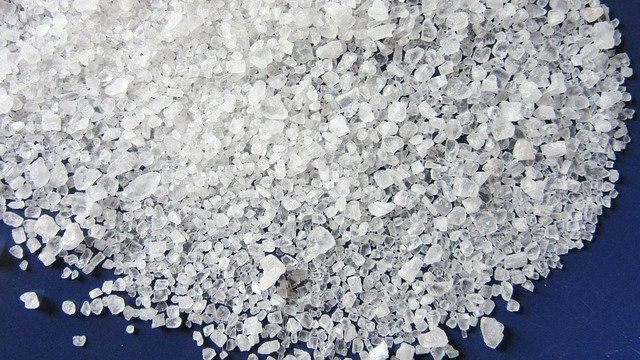"Saltiness is a cornerstone in Philippine cuisine,” Chef Tatung "Myke" Sarthou says. He said this during his 2017 Madrid Fusion presentation where he talked about sea salt and Mindanao cuisine.
It's no wonder why salt is a topic of interest for chefs. That's because restaurant chefs probably use more salt in their dishes than you do. This is one of the reasons why your dish may be less flavorful than a dish you may have tasted at a restaurant. While you may be concerned about adding too much salt, a chef knows that it needs more salt and isn't afraid to add more. Salt is after all the universal seasoning.
There are a few kinds of salt that you may encounter in the supermarket. Here are the most common kinds:
- • table salt
- • iodized salt
- • kosher salt
- • sea salt
- • pink Himalayan salt
- • rock salt
Table salt is simply your usual salt that has been refined and processed into salt. Iodized salt is table salt that has iodine added. Kosher salt is an unrefined salt that comes in large flaky crystals instead of cubed crystals. Sea salt is salt that has been taken from the ocean water by evaporation in salt beds where it is harvested. Himalayan salt is rock salt and pink in hue because of trace amounts of magnesium, potassium, and calcium. Finally, rock salt is unrefined salt taken from salt mines where seawater deposited salt, or also known as halite.
From these six kinds, here's what you should know about two kinds of salt that is the most common in Pinoy kitchens: iodized table salt and rock salt.

1 Rock salt looks grayish in color. Iodized salt is purely crystalline white.
Did you know that the closest salt we have to the much-touted kosher salt is our rock salt? Both kosher salt and rock salt are unrefined and (usually) are not iodized. Unrefined salts such as these usually retain the flavors, smells, and even the colors from where these salts were harvested from which is why sometimes, rock salt granules have a greyish hue and are not entirely white or clear in color. That's also why rock salt gives a dish a different salty flavor than that of the straight saltiness that table salt gives.
Iodized salt meanwhile has been refined to not only have the iodine in the salt granules but remove any impurities and other minerals in the salt to create a clean-tasting salty taste.

2 Rock salt has large grains. Iodized salt is small crystals.
Did you ever do the science experiment where you "grow" crystals from sugar? If you have, then you know that crystals form cubes. Unrefined salts have larger crystals because these are not recrystallized or monitored to make iodized table salt.
This is why you usually need to use more rock salt than iodized salt in dishes. The larger the salt crystals, the more you'll need to make your dish taste delicious. A quick tip regarding using rock salt is this: use double the amount of rock salt stated in a recipe that calls for fine-textured salt like iodized salt.
3 Rock salt will clump. Iodized salt won't.
Have you ever wondered why your salt clumps up and even contain water when stored in a container? Salt is a hygroscopic substance. All this means is that similar to sugar, it absorbs moisture. That's why it draws out moisture from food that salt is sprinkled on.
This is a bad characteristic however for food storage. Usually, an ingredient to prevent the salt from clumping together is added to iodized salt, too. This is why table salt such as iodized salt doesn't moisten while stored. Rock salt and other unrefined salts will.
[ArticleReco:{"articles":["16294","19342","21143"]}]
***
What's The Difference: Rock Salt Vs. Iodized Salt
Source: Daily Buzzers PH

0 Comments